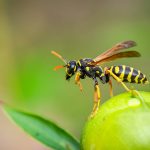Five Invasive Pests in New Mexico That Threaten Its Natural Beauty
New Mexico’s breathtaking majesty, from the deserts to the forests, has long captivated nature enthusiasts and outdoor adventurers alike. However, beneath the scenic beauty lies a hidden danger that threatens our fragile ecosystems: invasive pests. These unwelcome intruders arrive in the Land of Enchantment and shape the environment in ways that have massive long-term impacts.
In this blog, we will shine a light on five invasive pests in New Mexico that you may not realize are invasive and discuss some of the ecological consequences.
Five Invasive Pests in New Mexico
- Tamarisk Leaf Beetle: Introduced as a biocontrol agent to combat the invasive Salt Cedar, the Tamarisk Leaf Beetle has become a significant invasive pest itself. It has wiped out entire forests of the tree, causing problems for the endangered willow flycatcher, a bird that relies on the Salt Cedar. The Tamarisk Leaf Beetle also attacks native plants, reducing overall plant diversity and negatively impacting the habitats of native species.
- Citrus Longhorned Beetle: Originally from Asia, the Citrus Longhorned Beetle is a serious threat to New Mexico’s hardwood trees. Adult beetles lay eggs in tree bark, and their larvae tunnel into the wood, disrupting nutrient flow and weakening the tree’s structure. If established, this invasive beetle could lead to economic losses and negatively impact New Mexico’s forests and urban tree canopy.
- Brown Widow Spider: Often mistaken for the native Black Widow Spider, the Brown Widow is less dangerous but can still deliver a painful bite. It competes with native spider species and poses potential risks to people who come into contact with them.
- Red Imported Fire Ant: These aggressive ants form large colonies with painful stings, posing a risk to residents, wildlife, and pets. Moreover, they disrupt the local ecosystem by preying on small insects, affecting pollination, and competing with native ant species. In 1998, the state of New Mexico issued an emergency quarantine against red imported fire ants.
- Argentine Ant: Introduced from South America, the Argentine Ant is an invasive species that forms large supercolonies. It outcompetes native ant species for food resources and disrupts the local ecosystem.
How Can You Stop Invasive Pests in New Mexico?
To protect the unique biodiversity and natural beauty of the Land of Enchantment, everyone must play a role. Residents, conservation organizations, and government agencies must collaborate on invasive species management. Public awareness, early detection, and reporting of invasive species sightings are essential in controlling their spread. Additionally, responsible gardening practices and regulations on the importation of potentially invasive species can help prevent new introductions. By working together, New Mexicans can defend their beloved state and preserve its natural wonders for generations to come.
We live in a part of the country that’s unlike anywhere else. In order to protect it, we must take the threat of invasive pests seriously. Ecosystems are delicate and the introduction of a single species can change the balance.
Invasive Pest Control Services
Invasive pests are a serious ecological issue, but when they’re affecting your enjoyment of your own property, the problem hits closer to home. At New Mexico Pest Control, we offer top-notch invasive pest extermination services for New Mexico homes and businesses.
We’ve been in business since 1945, so we know how to take care of any pest problem that nature throws at us. Ready to work together to protect your property – and community – from the threat of invasive pests? Give us a call today to schedule your appointment.





